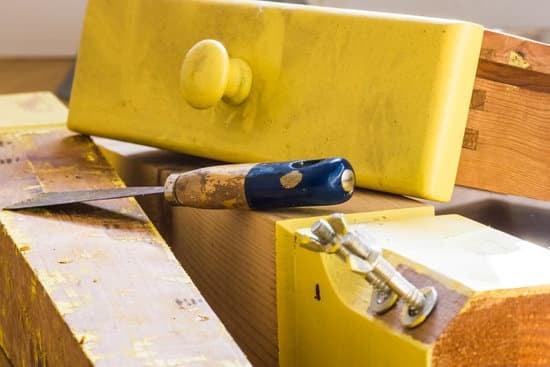Are you wondering how to improve the environment at home? Creating a healthy and sustainable home environment is essential for the well-being of both residents and the planet. In this article, we will discuss the importance of improving the home environment and how it can benefit you and the Earth. From assessing the current environmental impact at home to implementing sustainable habits, we will provide practical tips on creating a more eco-friendly living space.
Understanding the impact of the home environment is crucial in promoting a healthy and sustainable lifestyle. A well-maintained home environment not only benefits those living in it but also contributes to a greener planet. By assessing and making positive changes, you can help reduce energy consumption, minimize waste, and improve indoor air quality.
Assessing your current environmental impact at home is the first step towards making a positive change. We will discuss common areas of concern such as energy usage, waste management, and indoor air quality in order to guide you through conducting an assessment.
From there, we will provide practical tips on implementing energy-efficient practices, sustainable waste management, creating a green indoor environment, eco-friendly home improvement projects, encouraging sustainable habits among household members, and monitoring and maintaining a sustainable home. By following these tips, you can take important steps towards creating a more eco-friendly living space for yourself and future generations.
Assessing the Current Environmental Impact at Home
Before making any changes to improve the environment at home, it’s essential to understand the current environmental impact. Conducting an assessment will help identify areas of concern and prioritize where to focus efforts for maximum impact. One way to assess the environmental impact at home is by conducting a home energy audit. This can help identify areas where energy efficiency can be improved, such as insulation, appliances, and lighting.
Another important aspect of assessing the environmental impact at home is waste management. Take stock of your household’s waste production and disposal practices. Look for opportunities to reduce waste through recycling, composting, and avoiding single-use items. Additionally, consider indoor air quality as part of the assessment. Identify potential sources of indoor air pollution and look for ways to improve air quality through natural ventilation, air purifiers, and adding indoor plants.
By understanding the current environmental impact at home, you can make informed decisions on how to improve sustainability and reduce the overall footprint of your household. It’s an important first step in creating a more eco-friendly living space.
| Area | Impact |
|---|---|
| Energy Usage | The average U.S. household spends $2,200 per year on energy bills. |
| Waste Management | The EPA estimates that about 30% of our trash is recyclable. |
| Indoor Air Quality | According to the EPA, indoor air pollution can be two to five times higher than outdoor levels. |
Implementing Energy-Efficient Practices
Reducing Energy Consumption
One of the key factors in improving the environment at home is to reduce energy consumption. Simple practices such as turning off lights when not in use, unplugging electronics, and using natural light during the day can make a significant impact on energy usage. Additionally, investing in energy-efficient appliances and using smart power strips can help minimize unnecessary energy consumption.
Benefits of Energy-Efficient Appliances
Utilizing energy-efficient appliances, such as washing machines, refrigerators, and air conditioning units, can significantly reduce energy usage and lower utility bills. Look for appliances with the ENERGY STAR label, which signifies that they meet strict efficiency guidelines set by the U.S. Environmental Protection Agency. By replacing old and inefficient appliances with modern ones, homeowners can not only save money but also reduce their environmental footprint.
Proper Insulation and LED Lighting
Improving insulation in walls, attics, and windows helps to maintain a comfortable indoor temperature without over-relying on heating or cooling systems. This simple upgrade can lead to reduced energy usage and lower greenhouse gas emissions. Additionally, switching to LED lighting can also contribute to energy efficiency at home. LED bulbs consume less power, have a longer lifespan, and produce less heat compared to traditional incandescent bulbs.
By implementing these energy-efficient practices at home, residents can not only save on utility costs but also lessen their environmental impact. Making small changes in daily habits and investing in eco-friendly technologies are crucial steps in creating a more sustainable living environment at home.
Sustainable Waste Management
Implementing sustainable waste management practices at home is crucial in reducing the environmental impact of household activities. By following simple guidelines for reducing, reusing, and recycling household waste, individuals can significantly decrease their contribution to landfills and minimize their carbon footprint.
One effective way to improve the environment at home is by composting organic waste, such as fruit and vegetable scraps, to create nutrient-rich soil for gardening. Additionally, it is important to properly dispose of hazardous materials, such as batteries and electronic devices, by utilizing designated drop-off locations or recycling programs.
According to the Environmental Protection Agency (EPA), the average American produces about 4.51 pounds of municipal solid waste per day. This translates to over 267 million tons of discarded materials each year nationwide. By adopting sustainable waste management practices, households can play a pivotal role in mitigating this environmental burden. Furthermore, reducing unnecessary packaging and opting for reusable containers can help minimize the amount of waste generated within the home environment.
In addition to implementing sustainable waste management practices within the household, individuals can also support local initiatives aimed at promoting recycling and proper disposal of hazardous materials. Many communities offer curbside recycling programs and collection events for electronic waste and other potentially harmful substances. By actively participating in these programs, individuals contribute to the overall improvement of the environment at both local and global levels.
| Statistic | Data |
|---|---|
| Average daily municipal solid waste produced per person | 51 pounds |
| Annual total discarded materials in the US | 267 million tons |
Creating a Green Indoor Environment
When it comes to improving the environment at home, creating a green indoor environment is an essential step. Not only does it contribute to better air quality and aesthetics, but it also promotes a healthier atmosphere for the residents. Here are some tips on how to improve the environment at home by creating a green indoor space:
- Incorporate indoor plants: Indoor plants not only add a touch of nature to your home but also help improve air quality by removing pollutants. Some plants, such as spider plants and peace lilies, are known for their air-purifying abilities.
- Use natural cleaning products: Switching to natural cleaning products can reduce the number of harmful chemicals in your home. Look for eco-friendly options or consider making your own using simple ingredients like vinegar and baking soda.
- Reduce indoor pollutants: Be mindful of indoor pollutants such as cigarette smoke, pet dander, and mold. Proper ventilation, regular cleaning, and investing in an air purifier can help reduce these pollutants and create a healthier indoor environment.
By implementing these practices, you can create a green indoor environment that promotes better air quality and overall well-being for you and your family.
Improving the environment at home is about making sustainable choices that benefit both the residents and the planet. By assessing your current environmental impact, implementing energy-efficient practices, practicing sustainable waste management, creating a green indoor environment, undertaking eco-friendly home improvement projects, encouraging sustainable habits among household members, monitoring and maintaining a sustainable home – you can make significant strides towards creating a more eco-friendly living space.
It’s important to remember that every small change contributes to a larger positive impact on the environment.
Eco-Friendly Home Improvement Projects
Living in a sustainable home means not only reducing energy consumption and waste, but also making eco-friendly improvements to the house itself. From using renewable energy sources to choosing environmentally friendly construction materials, there are many ways to create a more sustainable living space.
Renewable Energy Sources
One of the most impactful eco-friendly home improvement projects is the installation of solar panels. Solar energy is a clean, renewable resource that can significantly reduce a household’s reliance on non-renewable energy sources. In addition to reducing carbon emissions, solar panels can also lower electricity bills in the long run. Furthermore, wind turbines and geothermal systems are other options for generating renewable energy at home.
Eco-Friendly Materials
When it comes to building or renovating parts of your home, make conscious choices about the materials used. Seek out sustainably sourced wood, bamboo flooring, recycled glass countertops, and low-VOC paint for your eco-friendly home renovation project. These materials not only have less impact on the environment during production but also promote healthier indoor air quality for you and your family.
Water Conservation Systems
In addition to reducing energy usage, water conservation systems can be implemented as part of an eco-friendly home improvement project. Rainwater harvesting systems can collect rainwater for landscape irrigation or non-potable uses within the home. Low-flow fixtures and water-efficient appliances are also effective in conserving water and reducing utility bills.
By incorporating these eco-friendly home improvement projects into your household, you can make a positive impact on both the environment and your quality of life. As new technologies and materials continue to emerge in the market, homeowners have even more opportunities to create sustainable and eco-friendly living spaces.
Encouraging Sustainable Habits
In order to improve the environment at home, it is essential to encourage sustainable habits among household members. By promoting mindful consumption and conservation practices, every individual can contribute to a healthier and more eco-friendly home environment.
Here are some tips on how to encourage sustainable habits at home:
- Create a water conservation plan: Encourage family members to be mindful of their water usage by fixing leaks, using water-saving fixtures, and practicing simple habits such as turning off the tap while brushing teeth.
- Practice mindful consumption: Promote the practice of reducing waste by buying only what is needed, avoiding single-use plastics, and supporting local and sustainable products.
- Educate household members: Take the time to educate everyone in the household about the importance of sustainability and its positive impact on the environment. Share information about recycling, energy conservation, and other eco-friendly practices.
- Lead by example: Set a good example for others by implementing sustainable habits yourself. Show your family members how small changes can make a big difference in improving the home environment.
By encouraging sustainable habits at home, you can create a positive impact on both the immediate environment and the planet as a whole. It is important to remember that every action counts when it comes to creating a more sustainable future.
Monitoring and Maintaining a Sustainable Home
Maintaining a sustainable home is an ongoing commitment that requires regular monitoring and upkeep. By ensuring that your home continues to operate in an eco-friendly manner, you can contribute to a healthier environment for yourself and future generations. Monitoring the environmental impact of your home allows you to identify any areas of improvement and take necessary steps to maintain a sustainable living space.
One key aspect of monitoring and maintaining a sustainable home is keeping track of energy usage. By regularly checking energy bills and comparing usage patterns, homeowners can identify areas where improvements can be made. Additionally, conducting regular maintenance on energy-efficient appliances, such as air conditioners and water heaters, can ensure that they continue to operate at peak efficiency. This not only reduces energy consumption but also lowers utility costs.
In addition to energy usage, it is important to monitor waste management practices in the home. Regularly assessing the amount of household waste produced and tracking recycling efforts can help homeowners identify opportunities for improvement. Setting up a composting system for organic waste can further reduce the environmental impact of the household. Proper disposal of hazardous materials, such as batteries and electronics, is also essential in maintaining an eco-friendly home environment.
Regular maintenance of indoor air quality is another crucial aspect of monitoring a sustainable home. Air purifiers, regular cleaning routines, and proper ventilation are all essential for ensuring clean indoor air. Homeowners should also monitor for any sources of indoor pollution, such as mold or chemical fumes, and address them promptly.
By actively monitoring these aspects of their homes, individuals can ensure that their living spaces remain environmentally friendly. Sustainability requires ongoing effort, but the long-term benefits for both residents and the planet make it well worth it.
Conclusion
In conclusion, creating a sustainable and eco-friendly home environment is not only beneficial for the residents but also for the planet. By implementing energy-efficient practices, sustainable waste management, and creating a green indoor environment, individuals can significantly reduce their carbon footprint and contribute to a healthier planet. It’s essential to assess the current environmental impact at home and make necessary changes to improve sustainability.
Furthermore, encouraging sustainable habits among household members and undertaking eco-friendly home improvement projects are crucial steps toward creating a more sustainable living environment. By promoting water conservation, mindful consumption, and using eco-friendly materials in home renovations, individuals can make a positive impact on the environment. Educating future generations about the importance of sustainability and setting a good example are equally important in creating lasting change.
Frequently Asked Questions
What Can We Do at Home to Help the Environment?
There are numerous things we can do at home to help the environment. Simple actions like reducing water usage, switching off lights when not in use, recycling, and using energy-efficient appliances can make a big difference. Planting trees in our backyard or starting a small garden can also contribute positively to the environment.
What Are 20 Ways to Help the Environment?
There are countless ways to help the environment. Some practical suggestions include carpooling or using public transportation, reducing meat consumption, composting food waste, supporting sustainable businesses, conserving water, and participating in local clean-up events. These actions, when done collectively, can have a significant impact on the environment.
What Are 100 Ways to Help the Environment?
With 100 ways to help the environment, there is something for everyone to contribute positively to our planet’s well-being. Small changes like using reusable shopping bags, eating organic foods, avoiding single-use plastic products, and supporting renewable energy sources can all play a part in environmental conservation efforts.
Additionally, advocating for environmental policies and taking steps towards zero waste living are also meaningful ways to make a difference.

I’m thrilled to have you here as a part of the Remodeling Top community. This is where my journey as an architect and remodeling enthusiast intersects with your passion for transforming houses into dream homes.





